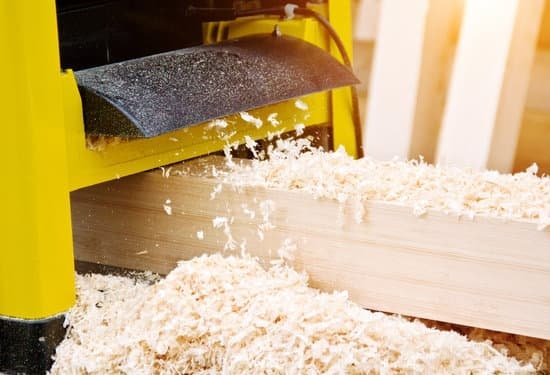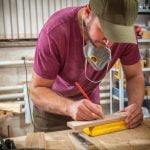Introduction
Crafting your own cutting board can be a rewarding experience for beginner and experienced woodworkers alike. The time and effort invested in creating a cutting board will be well worth it when you step back to admire the finished product ” yours! Whether you choose one of the more detailed patterns from a woodworking plans package or go with something simpler, the satisfaction of crafting a beautiful piece of woodwork will be unparalleled.
If you are a hobbyist just starting out in woodworking, the task of crafting your own cutting board can seem daunting at first. However, with just a few tools, such as saws, drills, or routers, proper guidance can quickly provide you with the skills needed to confidently create attractive pieces of craftsmanship. There is also an abundance of resources available to help guide willing novices into creating beautiful works like cutting boards. Once you have read up on basic techniques and tutorials on how to make wooden objects from scratch, you will gain not only confidence but also insight into complex tasks like joining edges and constructing miter angles. These fundamental principles are essential in most joinery processes used for both small and larger scale projects like furniture-making and cabinetry. Furthermore, since the process isn’t too complicated for an entry-level enthusiast or DIYer to learn quickly, most people can dive right into designing their very own custom cutting board almost immediately after gathering all the necessary materials and equipment. Building your own original piece is always more satisfying than buying store-bought kinds because it gives you the opportunity to customize its design according to your preferences such as size and shape depending on what suits your needs best. Not only that but having access to specific types of woods from reliable suppliers means better opportunities for using high quality hardwoods which will create an excellent finished product that shows off beautiful grain details once varnished or oil coated after being properly sanded down beforehand using various abrasive grains between 150-220 Grits for maximum smoothness.
Materials & Styles
When choosing the right cutting board for woodworking projects, it is important to understand the types of wood and grain patterns available. Popular choices include maple, cherry, ash, walnut, and oak. All of these woods offer unique advantages, with different benefits for certain types of project and specific tasks. For example:
Maple is one of the most popular materials for cutting boards because it is hard yet flexible enough not to dull knives easily. Maple boards are also particularly resistant to splitting and cracking which makes them an ideal choice for heavier duty work such as carving meats or chopping vegetables.
Cherry offers a beautiful red-brown color that looks great on any counter top while being one of the harder varieties that specifically fight against bacteria growth. While more expensive than other options, cherry’s beauty and durability make it a great investment in your kitchen tool collection.
Ash produces a coarse grain pattern that works well if you tend to use very sharp knives on a daily basis. Ash boards are often chosen when working with delicate items like sushi or making precise cuts as they can take heavy use from sharp blades without serious damage.
Walnut adds both beauty and functionality to any woodworking project as its grain pattern offers good traction so items don’t slip off the board easily. Walnut also takes care not to damage knives due to its hardness so whether you’re slicing bread or shaping cheese you can always trust your tools with this material choice.
Finally oak might be an ideal selection for those experienced in woodworking projects as due to its softer nature it’s easier to carve or shape with hand tools than other woods like maple or walnut. On the flip side, oak’s texture can become scratched quickly over time meaning users will need to reapply oil more often if they want their boards looking as good as new each time they use them!
Tutorial
1. Start by selecting the type of wood you want to use for your cutting board. You can choose from a variety of different types such as maple, cherry, oak, or walnut. Consider which type will look best in your kitchen, as well as its durability and cost.
2. Measure out the size for your cutting board according to your desired dimensions and mark the measurements on the wood with a ruler and pencil. Cut the wood to size with either a circular saw or jigsaw.
3. Sand down any rough edges or imperfections in the wood with sandpaper until they are smooth. This is important in order to create a safe working surface for food preparation when using your cutting board.
4. Drill holes into each end of the board that fit dowel rods or pegs of similar size for creating handle cutouts on each side of the board with ease.
5. Using a router, trim around the perimeter of each peghole to give it a more finished appearance on the outside edge and provide a better grip when carrying it around more easily by hand.
6. To prevent warping or splitting after use, it’s important to properly seal your cutting board before first use so seal either side with an oil like mineral oil and rub it into all exposed surfaces with a dry cloth before adding additional coats if needed afterward depending on usage rate.
7. After sealing, apply pieces felt pads on each corner (four total) so that when placed on a countertop or table, it won’t scratch them up upon being moved across them regularly during food prep tasks associated with woodworking projects such as veggie chopping etc…
Design Ideas
One way to decorate a woodworking projects cutting board is to use decoupage. Decoupage is a craft technique where images, paper, or fabric can be cut into shapes and glued onto the surface of a cutting board. The design possibilities for this project are endless ” anything from colorful geometric patterns, photos of loved ones, or intricate designs can be used.
Another fun way to decorate your woodworking projects cutting board is to use paint and stencils. This method allows you to personalize your cutting board with whatever phrase or words you choose. You could use spray paint to create an eye-catching design, or opt for traditional acrylic paints that require an artistic touch. Don’t forget the protective finish ” either water-based polyurethane or mineral oil can help ensure that the colors on your cutting board stay vibrant for years to come.
For a more rustic look, try adding some carving designs onto the woodwork projects cutting board. Use chisels or knives to carve out tiny birds, flowers, stars, and any other pattern that strikes your fancy! Just make sure to sand down uneven surfaces so they are smooth and safe for food preparation afterward.
Finally, another great option if you’re looking for something special is engraving your words or artwork into the top of the cutting board using power tools such as rotary tools and Dremel bits. You could spell out inspirational phrases like “eat well” or pronouncement like “bake it again”; engrave beautiful landscape scenes; carve out a quote from your favorite book; draw portraits of family members; write out recipes; etc! Engraving offers limitless potential in terms of self-expression and customization ” so don’t hesitate take advantage of this fantastic opportunity when creating woodworking projects!
Finishing
Woodworking Projects Cutting Board Finishing:
The finish on a cutting board is incredibly important. Not only does it make the piece look great, but it also protects the wood and helps prevents bacterial growth. To ensure you select the right finish for your cutting board, consider several aspects. First, think about what type of material you are using. Different woods need different types of sealants and finishes. For example, you would not apply the same finish to an oak cutting board as you would to a maple cutting board.
When choosing a finish, decide whether you want something that will penetrate into the wood (such as mineral oil) or something that will add visual appeal, such as varnish or lacquer. Oil finishes allow for quick and easy maintenance, as they can be wiped on at regular intervals without needing a complete re-application every time; however, they tend to wear more quickly than varnish or lacquer so they may need to be reapplied more often if the board gets heavy usage. Varnishes and lacquers offer long-term protection but require more effort in their application and must be completely redone when reapplying.
No matter which finish you choose, remember proper maintenance is key to extending the life of your cutting board. Wipe down surfaces with an appropriate cleaner every few uses to remove food particles and bacteria and help keep your cutting board looking great over many years of use!
Gallery
Woodworking projects cutting boards provide the perfect opportunity for expert artisans to demonstrate their skill in craftsmanship with beautiful and intricate designs. A woodcutting board allows the crafter to elevate an everyday kitchen item into a veritable work of art. The possibilities for woodcarved boards are endless ” from organic shapes and complex curves, to geometric patterns and finely detailed illustrations. Some of these luxurious creations are even personalized with distinctive engravings or inlays which lend further interest and character. It’s easy to see why professional artisans get so much enjoyment out of creating these works of functional art ” they can make a real statement in any kitchen as well as providing such practicality as serving platters and cheese platters.
When it comes to crafting a cutting board, there is no single right way to go about it – every artisan has their own unique approach towards their work, but all end up with awe-inspiring results at the end. Artisans often use the most premium woods available, like maple, walnut, cherry, oak or even mahogany, ensuring that both beauty and durability will be part of the final product. To achieve affordability some craftsmen also specialize in hybrid woods like bamboo or reclaimed wood which offer an original look with smaller price tag. Adding texture or color by implementing techniques such as staining or oiling can also help differentiate each piece from another and make it truly unique and one of a kind.
The idea behind making a cutting board is not just having something visually appealing; it’s also about making something that’s incredibly sturdy and durable enough to last through years of use while still looking as good as new. As they’re likely intended to serve functions other than just slicing veggies or roasts from time to time, enthusiasts often try out things like adding secret drawers for knives or spice holders – all great ways to impress friends and family during the next dinner party!
Conclusion
The making of a woodworking projects cutting board is more than just the process of cutting, sanding and finishing wood. It’s more than the build itself- it’s seeing how a simple piece of wood can become something intricate and special. With every cut, there is something to be learned about craftsmanship, accuracy and creativity. It’s a unique experience when creating such an item from nothing but natural materials. The end product tells a story” one that speaks of hard work and dedication as well as style and character. Woodworking projects are not only an enjoyable activity but also a source of pride for anyone who takes on the challenge. After all, every great adventure starts with beginning to create something with your own two hands.

Hi everyone! I’m a woodworker and blogger, and this is my woodworking blog. In my blog, I share tips and tricks for woodworkers of all skill levels, as well as project ideas that you can try yourself.





